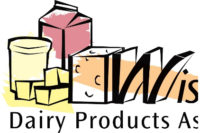Five ways to mitigate sealing issues in dairy products
Every food manufacturer strives to achieve perfect sealing for food packaging. For dairy products, ensuring seal integrity is even more critical. Products like yogurt, dips and dairy drinks often have short expiration dates and are very sensitive to external agents such as oxygen, moisture and other contaminants. Contamination due to faulty seals can lead to significant losses and even damage a company’s reputation.
Having a high-quality, reliable sealing machine is critical for dairy food manufacturers. It ensures efficient package closure while maintaining the freshness and safety of the products. However, he points out that sealing issues can arise from various factors. Jones outlines five ways to mitigate these issues and enhance dairy food production quality.
1. Ensure clean filling
Even modern filling and sealing machines can suffer from poor seal quality if there is contamination in the seal area. Contaminants typically accumulate in the seal area when the dosing system is either poorly designed for the product or not adequately maintained.
A well-designed dosing system prevents “tailing” on thick products — such as cream cheese, dips and spreads — where the product hangs from the dosing system and is dragged into the seal area of cups and pouches. For thin products like milk or dairy drinks, properly designed nozzles prevent splattering or splashing. In either case, regular cleaning and maintenance are essential for accurate system functioning, ensuring the product is placed in the package without interfering with the seal.
Automated systems offer lower contamination risks than manual systems by minimizing human inconsistencies. Consistent speeds, acceleration and deceleration prevent product splashing into the seal area. Machine operators must receive training from the OEM on the proper maintenance and care procedures for the dosing system.
2. Consider packaging and product requirements
Sealing performance is significantly influenced by the packaging material’s properties. The choice of material for the lid and cup will determine the ideal heat and pressure settings, and even pressure distribution is required for a robust seal. In the dairy world, the product’s characteristics will dictate the type of material used for sealing the package. For instance, most yogurt manufacturers use aluminum lids because of their barrier properties and ability to be hermetically sealed to plastic or glass containers.
Smart, flexible systems can easily accommodate varying temperature, pressure and dwell time requirements of different packaging materials.
“Food manufacturers sometimes underestimate the importance of understanding the sealing specifications for their packaging type. This oversight can pose significant challenges,” Jones explained. “It is crucial not to take risks with seal performance. Invest in reliable, easily adjustable sealing solutions that can adapt to your packaging requirements. It will pay off.”
3. Conduct regular preventative maintenance
Consistent preventative maintenance (PM) schedules are pivotal for avoiding sealing issues. They ensure the smooth operation of cup handling, product filling and lid placements. In addition, routine checks and maintenance allow for early identification of wear and tear, enabling timely part replacement before failure occurs. Regular cleaning prevents debris and residue buildup, which can also affect seal integrity.
“Programs that emphasize preventative maintenance, like Waldner Care, ensure that your highly efficient packaging equipment functions at the high level of OEE that they were designed for. In addition, maintenance services help food manufacturers comply with safety standards and adhere to food safety regulations,” Jones said.
4. Harness the power of innovative technologies
Automated systems boast high precision levels throughout the production line and increase workflow efficiency, which ultimately helps mitigate sealing defects. They continuously monitor the sealing process for anomalies, like temperature fluctuations or pressure variations. For most dairy products, inspecting packages for residual oxygen is crucial due to the presence of aerobic or anaerobic bacteria. Some products, like creamer cups, can be vulnerable to both types.
Manufacturers have been implementing self-monitoring technologies, like ultrasonic sealing systems, to enhance automated system capabilities. They utilize acoustic vibrations to weld two materials together while increasing sealing precision and efficiency. Jones also points out another option: adopting smart inspection technologies that promptly identify defects and offer suggestions.
5. Select smart post-sealing handling
After the sealing process is complete, packages may still be susceptible to damage during transportation to downstream equipment such as retort chambers, secondary packaging equipment or storage facilities. This is particularly true for some cheese bars, where the flexible packaging can develop sharp corners and puncture others downstream if not handled properly.
Efficient automated solutions ensure proper handling while avoiding punctures, tears and other damage to packages that can compromise the product. These systems also facilitate swift package relocation, reducing the risk of spoilage.
“We have seen cases where package integrity issues resulted from aggressive pick-and-place operations, occurring at the final stage of the food packaging process. It’s imperative that manufacturers assess their current systems’ compatibility within the production line, ensuring smooth operations and the ability to accommodate packaging material modifications or equipment changes,” Jones concluded.
Looking for a reprint of this article?
From high-res PDFs to custom plaques, order your copy today!








